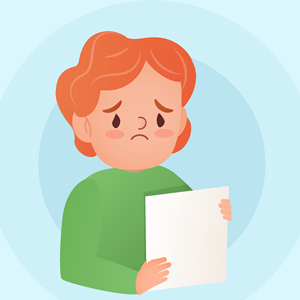When Phonics Doesn't Work

When Phonics Doesn't Work
If young children do not learn to read properly, they will begin to fall behind in their school work. The goal of a systematic, synthetic phonics programme is to help all children to keep up by developing the skills they need to 'crack the reading code'.
Sometimes it might seem that your young reader is concentrating too hard on sounding out words and does not really understand what they are reading. Usually, you just need to be patient and remember that everything gets easier with practice. The sounding out skills your child is practising will gradually become more and more automatic. They will then be better able to concentrate on the meaning of what they are reading.
However, phonics does not work well for all children. It is a "bottom up" approach. It starts with the letters that are the building blocks of words and shows learners different ways to put these building blocks together. Another approach is the look and say or whole language method, a "top down" approach which teaches children to recognise and memorise whole words by sight.
Children have different learning styles. If phonics does not seem to be working for your child, think about how they learn best. Is your child an auditory learner who likes listening to songs and stories and easily remembers what they hear? Are they a visual learner who likes looking at pictures and easily remembers what they see? Or are they a kinesthetic (physical) learner who likes to be physically active and who learns best by doing?
Children have different learning styles.
While phonics is believed to work best for auditory learners, visual learners may get bored or frustrated with this bottom up approach, and may respond better to whole language learning. If your child is a visual learner, you can use picture books and flashcards to help them associate whole words with pictures. Later on, you can help them to connect words with images by getting them to imagine and draw pictures of things you describe or create interpretive illustrations of stories you read to them.
Kinesthetic learners need to touch and manipulate things so that they can learn through their senses. Activities that help kinesthetic learners include feeling and matching magnetic letters, writing letters with tactile substances such as finger paint, sand or glitter, and cutting out letter shapes.
Phonics and Dyslexia
Some researchers believe that phonics may benefit children with dyslexia by retraining the neural pathways in their brains. Other experts believe that dyslexic children benefit most from multisensory methods similar to those which help kinesthetic learners. Other useful tools for the dyslexic learner include whole word recognition, and training to recognise their own errors.
Phonics, Hearing and Vision
Hearing is important so that children can tell the difference between speech sounds, and clear vision is needed to recognise letters and tell them apart, so it is important to have your child's ears and eyes checked and get problems resolved if necessary.
Children who are severely hearing impaired or deaf face particular challenges.
A fact sheet provided by the National Deaf Children's Society states that deaf children can benefit from phonics. However, even though they have the assistance of modern hearing technology they still need extra learning support.
Deaf children do not develop phonological awareness (the ability to recognise the sounds of speech) or auditory memory (the capacity to remember information that they hear) as quickly as their hearing classmates. Therefore, they need extra practice listening to songs, stories and rhymes to help them catch up. In addition, they may not learn sound and letter correspondences as quickly as other children, so parents may need to give them extra help at home. Parents may also need to ask teachers to minimise background noise to make it easier for their child to hear. It also helps deaf children if their teacher uses hand signs in conjunction with letter sounds.
The phonological awareness of visually impaired children develops normally, so they do not generally have any developmental problems which could make phonics a challenge. Their challenges will be the same ones that they will face with any reading programme. Depending on their particular needs, they should learn Braille or be provided with large print or a magnification device.
Phonics and English Language Learners
Phonics needs to be taught as one part of a well-rounded reading program.
Children whose first language is not English may also face some difficulties hearing the speech sounds of English correctly, not because they have hearing problems but because they have learnt to listen to different speech sounds. Every language has its own unique set of sounds. For example, while in English we have two separate sounds, l and r , Japanese has one sound that to an English speaker sounds halfway between the two. As a result, Japanese speakers often confuse the letters l and r because they have not learnt to hear the difference between the two, and make spelling mistakes such as writing "lice" instead of "rice".
If you are a parent who speaks a different language at home, this may not be something you can help your child with. The best thing is to continue speaking your own language at home to help your child's general language development. Young children can learn a new language very quickly, and classroom activities such as language games, songs, poems and tongue twisters will soon help them to develop their English listening skills.
Because all children are different and have different learning styles, phonics needs to be taught as one part of a well-rounded reading programme. If your child seems to be finding phonics difficult, you may need to provide extra help at home, and if he or she has particular challenges you may need to discuss your concerns with their teacher.
Continue reading: Phonics Around The World

